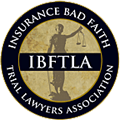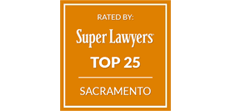California Crosswalk Laws and Accidents
Crosswalks are designated zones intended to keep pedestrians safe as they cross busy streets. Unfortunately, these safety zones can become the scenes of accidents when drivers fail to adhere to safety regulations and standards. A crosswalk accident can lead to devastating injuries, emotional suffering, and financial burdens.
The lawyers at Eric Ratinoff Law Corp. have experience handling complex crosswalk accident claims and have an in-depth understanding of traffic laws, negligence standards, and the intricacies of personal injury law required to build a solid case. We investigate the accident, gathering evidence that pinpoints negligence, whether it’s on the part of the driver, the local government for inadequate crosswalk maintenance, or other contributing factors. By advocating on your behalf, we help you obtain compensation for damages and hold the responsible parties accountable for their misconduct.
Contents
- 1 9 Crosswalk Laws Californians Should Know
- 1.1 1. Definition of a Pedestrian
- 1.2 2. Crosswalk Markings
- 1.3 3. Pedestrian Use of Bike Lanes
- 1.4 4. Right of Way at Crosswalks
- 1.5 5. Use of Crosswalks at Intersections
- 1.6 6. Adherence to Crossing Lights
- 1.7 7. Vehicle Obstruction of Crosswalks
- 1.8 8. Sidewalk Crossing Right of Way
- 1.9 9. Protections for Blind Pedestrians
- 2 Types of Crosswalk Accident Claims
- 3 Speak With the Pedestrian Accident Lawyers at Eric Ratinoff Law Corp.
9 Crosswalk Laws Californians Should Know
The following are nine of the most important crosswalk laws pedestrians in California should know:
1. Definition of a Pedestrian
In California, being a pedestrian isn’t limited to just walking. Under the California Vehicle Code (CVC) 467, a pedestrian includes individuals using a variety of mobility aids such as motorized devices for those who can’t walk, and self-propelled items like skateboards, scooters (excluding motorized ones), rollerblades, and wheelchairs. However, bicycle, e-scooter, and hoverboard users are not classified as pedestrians.
2. Crosswalk Markings
While many assume all crosswalks are marked with white lines, California law (CVC 275) states that crosswalks can also be unmarked pathways extending through intersections where two roads meet at right angles, in addition to the traditional marked versions.
3. Pedestrian Use of Bike Lanes
Pedestrians in California are generally expected to avoid bike lanes if there’s an available sidewalk or walking path nearby, as per CVC 21966. They may, however, use bike lanes if the sidewalk is obstructed.
4. Right of Way at Crosswalks
Drivers must yield to pedestrians crossing at crosswalks, as mandated by CVC 21950. Pedestrians must also be cautious, avoiding sudden movements into the path of vehicles and unnecessary stops within the crosswalk.
5. Use of Crosswalks at Intersections
The Freedom to Walk Act updates previous regulations, allowing pedestrians to cross at intersections with traffic control signals without being confined to crosswalks, provided they cross safely.
6. Adherence to Crossing Lights
Pedestrians must follow electronic crossing signals, proceeding when indicated safe and yielding to vehicles in the crosswalk, even during the walk phase. They’re allowed to start crossing on a blinking signal but must complete the crossing before it stops.
7. Vehicle Obstruction of Crosswalks
It’s illegal for drivers to unnecessarily block crosswalks under CVC 21970, whether marked or unmarked. This rule doesn’t apply to drivers waiting at a red light to turn right.
8. Sidewalk Crossing Right of Way
As stated in CVC 21952, pedestrians have the right of way on sidewalks, and vehicles are required to yield when crossing sidewalks to enter or exit driveways.
9. Protections for Blind Pedestrians
California law (CVC 21963) provides additional rights to blind pedestrians using a cane or guide dog, requiring drivers to yield and exercise greater caution. Drivers who do not exercise greater caution for protected pedestrians can face significant penalties, including fines and possible jail time.
Types of Crosswalk Accident Claims
Crosswalk accidents can result from various scenarios, which is why it is essential to work with the pedestrian accident lawyers at Eric Ratinoff Law Corp. to help you navigate the legal process and seek compensation for injuries.
The following are common types of crosswalk accident claims:
- Driver Negligence: These claims arise when a driver’s failure to adhere to traffic laws results in an accident. Examples include speeding, failing to yield at a crosswalk, distracted driving, or driving under the influence.
- Municipal Liability: Occasionally, the design, maintenance, or signage of a crosswalk can contribute to accidents. In these cases, a claim may be filed against the municipality or government entity responsible for the crosswalk’s upkeep.
- Wrongful Death: In circumstances where a pedestrian dies as a result of a crosswalk accident, the victim’s family may seek a wrongful death claim. These claims may secure compensation for the loss of financial support, emotional distress, and funeral expenses.
Each type of claim requires a tailored approach to establish liability, causation, and damages. The lawyers of Eric Ratinoff Law Corp. are prepared to fight for justice, no matter the cause of your pedestrian accident.
Speak With the Pedestrian Accident Lawyers at Eric Ratinoff Law Corp.
If you were involved in a pedestrian accident, you don’t have to navigate the legal process alone. The highly qualified pedestrian accident lawyers at Eric Ratinoff Law Corp. can provide the guidance, support, and legal knowledge necessary to advocate for the resolution and compensation you deserve.
Contact one of our Sacramento pedestrian accident lawyers today to discuss your case at (916) 970-9100 or fill out a contact form.

















